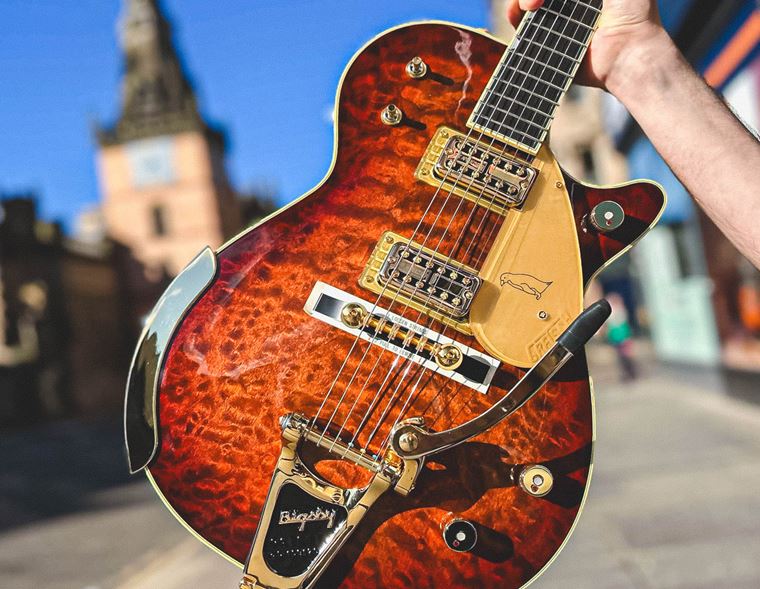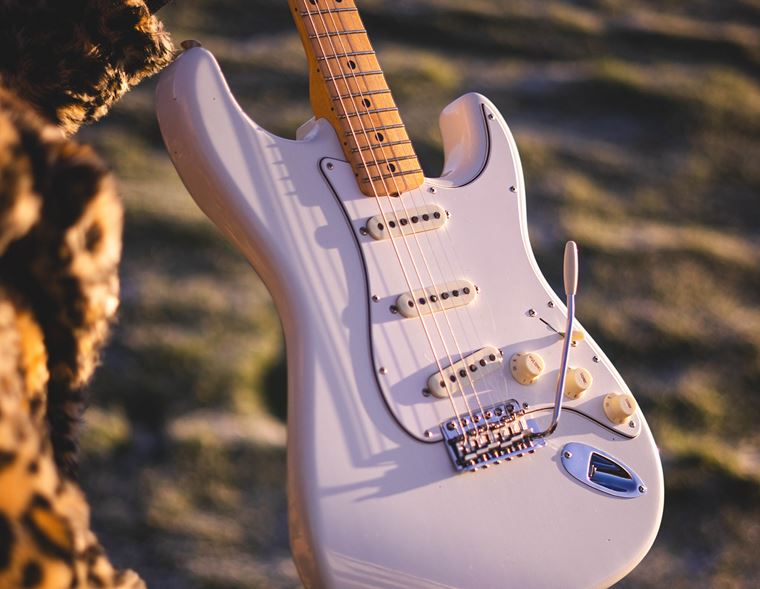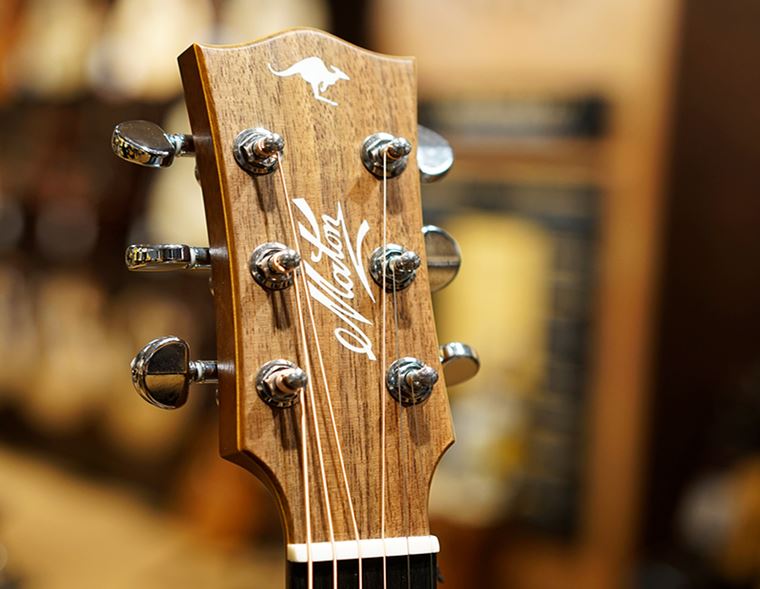Live Recording: Our Shure Session Microphone Choices
Published on 29 August 2023
Are you looking to record some live music? Are you a fan of our Shure Sessions? If so, we’ve put together this handy resource for you. It’s a brief and to-the-point roundup of the mics we use when creating our Shure Sessions, along with tips on what we use them for, and how we employ them.

We figure that this info will provide a good base for you to approach your own live sessions. Whether you want a full complement of specialised microphones or need just a couple of versatile mainstays that cover all requirements, we've got you sorted. Since our sessions are in collaboration with Shure, the mics choices today will all be from them. Rather than a compromise, this suits our - and your - needs pretty perfectly, since the mics we’ll be looking at are all bona fide industry standards.
Shure Sessions
Our guitarguitar Shure Sessions are intimate, mostly-acoustic live performances, recorded and filmed at one of our locations. From local emerging artists to established touring musicians, our sessions cover a myriad of styles, genres and approaches.
Whilst our artists are often vocalists who accompany themselves on an acoustic guitar, there’s actually a lot of diversity too: from digital pianos to artists who use laptops and percussion, we see lots of cool instruments being used. This of course means that we need strategies in place to capture these sounds properly, and of course, the right mics! Let’s check out what’s used, and how…
Recording Vocals
Despite being called guitarguitar and therefore being heavily biassed towards everything six-string, even we will concede that the most important element of any song is the vocal. The vocal carries the main message, be that lyrical or melodic, so it’s the one area that needs to translate clearer than anything else.
For the Shure Sessions, we have three different mics to call upon for vocals. The first is easily the most popular microphone in the world, and you’ve definitely used or at least seen this one before. It’s the Shure SM58 and to call it ‘industry standard’ is like calling pizza ‘a popular food’. This is the number one choice for venues, rehearsal rooms and events across the world. Why? Well, it’s simple and it works excellently whilst also being very robustly built. They are renowned for being ‘tour proof’ and sound consistently great.
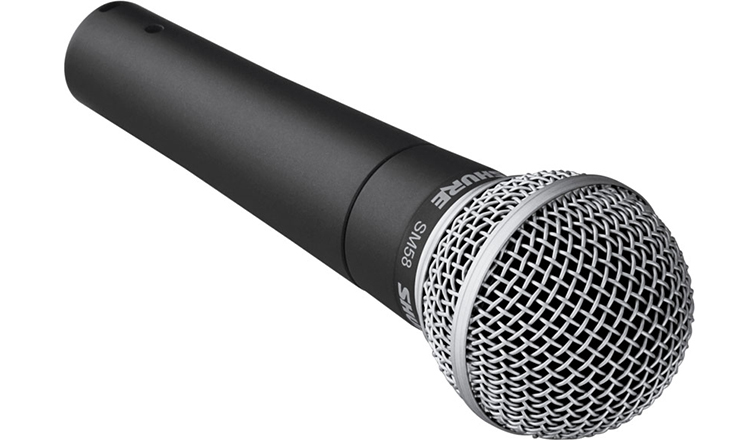
The SM58 is a dynamic mic, so it needs no extra power supply or batteries in order to function: just plug it into a PA system, audio interface or amp and you’ll get a signal! It has a wide level of frequency response - 50 Hz to 15 KHz - so it is a good choice for a wide variety of voices and instruments, and its polar pattern (the shape of real-life space in which the mic can pick up sound) is known as cardioid, which means it captures details from nearly all around it.
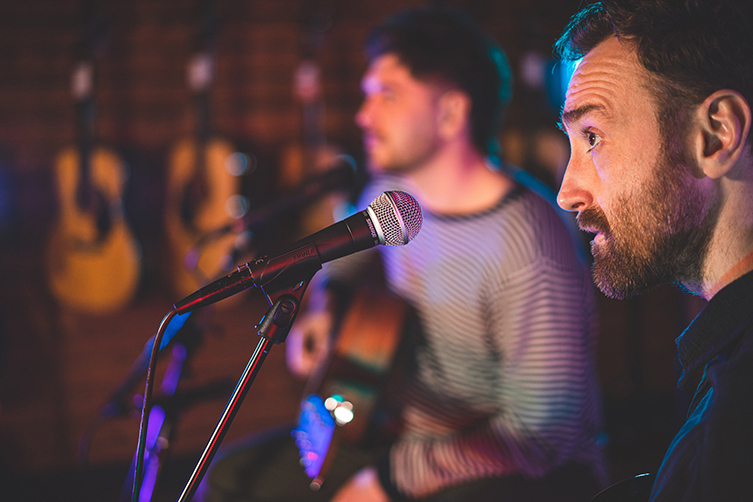
This world-famous mic is good for everything but particularly good for vocals, and it is in this area that we most often use it. Every sound engineer will know this mic backwards, so it’s great to have one in your mic armoury. When recording, you can can up close to the mic as it needs no additional pop shield, and you’ll get the best results by aiming the mic at your mouth, as opposed to having it facing the sky, as it were.
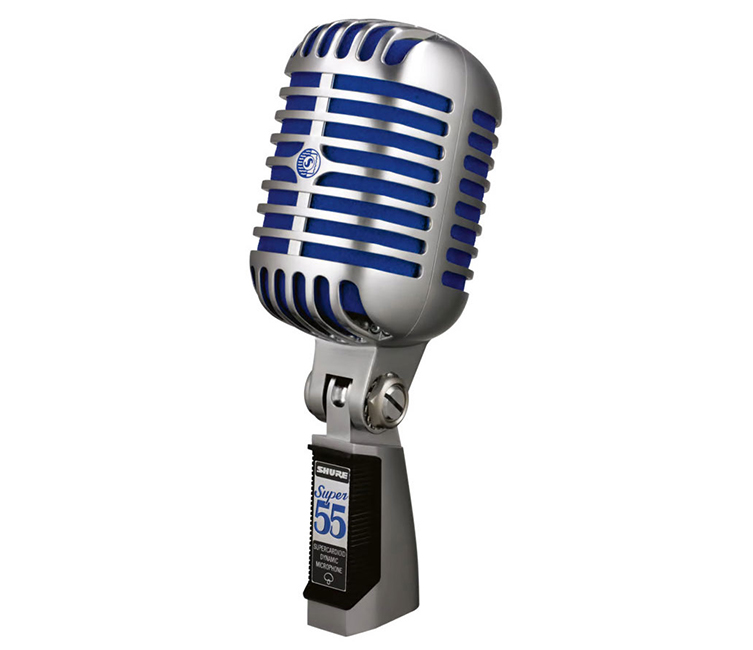
Another mic we love to use is the Shure Super 55 Deluxe. This charismatic chunk of metal is a nod to the brand’s own past in terms of its look at least. The Super 55 is modelled on the old Shure Unidyne Model 55 mic that was made famous by the likes of Elvis, but the inside ‘guts’ of the mic ar the same as their BETA 58, which is essentially an upgrade of the SM58. So, if you want excellent sounding vocals with lots of clarity, the Super 55 will be a very good choice.
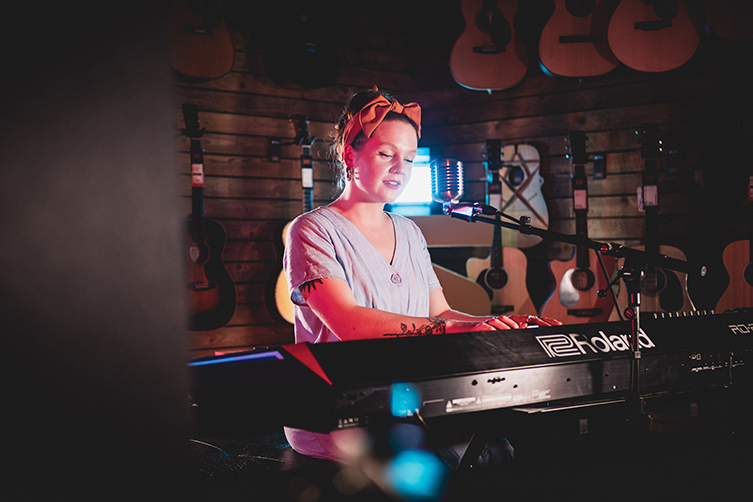
Also, if you understand the whole notion of how aesthetics play into things, then you’ll be open to the idea that a performer will undoubtedly put in a great performance when they stand in front of such a cool looking microphone! It’s a psychological game, yes, but a real one none the less! The coolness of the Super 55 is most definitely secondary to it’s highly effective performance, though, so it’s no gimmick! This is a serious mic for stylish situations.
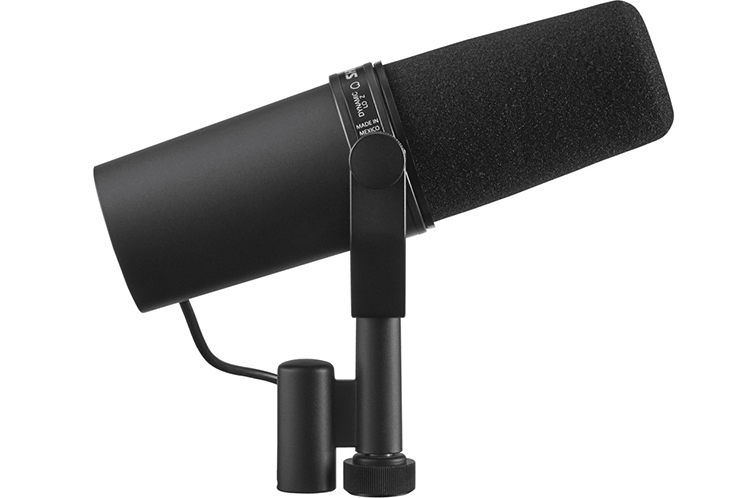
The third mic we like to use in out Shure sessions is the SM7B. Despite how this looks, it is still a dynamic mic just like the SM58 and Super 55. The SM7B is extremely popular for broadcasters, voiceover artists and any studio needs that require well-recorded vocals with lots of detail. For context, both Michael Jackson and James Hetfield use(d) the SM7B for their vocals! The large diaphragm design takes in a ton of detail, but the slightly narrower polar pattern means that the area it takes sound from will be more focussed. Again, no special pop filter is needed, so there’s an extra practical bonus in using this mic. With a 50Hz - 20 KHz frequency available, it’ll capture all voices from bass to soprano.
Recording Acoustic Guitars
When it comes to recording acoustic guitars, there are a pair of mics we like to use. Before we detail those though, we’d say that it’s a perfectly fine practice to use a guitar’s built-in pickup system to capture its sound if that’s what you want (or indeed need) to do. That said, we’ve personally found that carefully micing the instrument always gets the best, most realistic and most expressive results.
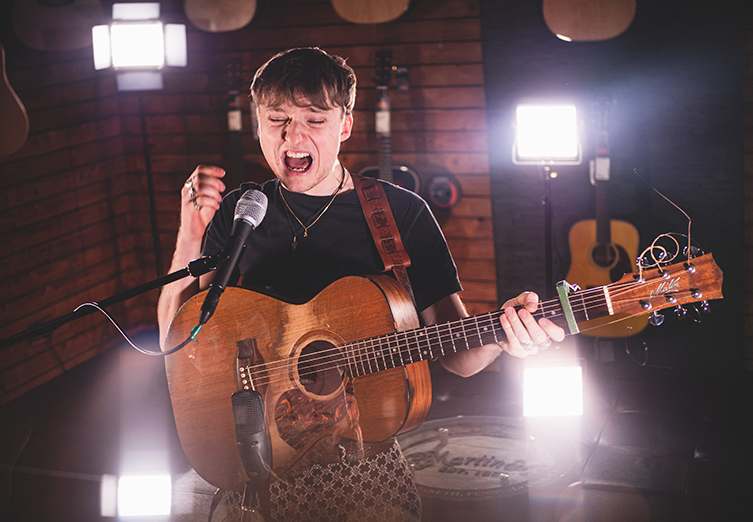
So, if you have one mic available, angle it at a roughly 45 degree angle to the guitar’s neck and position it between 6 inches to just over a foot from the guitars’ upper frets, pointed at the soundhole. If you have the time, test a few variations in terms of angles and inches, but this rough position will get you some excellent results.
If you have two mics, try having another perhaps a foot or so away and facing the guitar’s body from the other diagonal. Have a look at this video below to see how we position the mics…
As for the mics themselves, our main choice is the Shure SM27. It’s a large diaphragm condenser mic, so you’ll need to plug it into something that delivers phantom power. We really like this mic at guitarguitar because it’s pretty much useful for all micing tasks: acoustic guitars, vocals, string instruments, drums & percussion, even room ambience! It’s one of those classic mics that can be worked into any setup, and it always picks up a good level of detail and nuance.
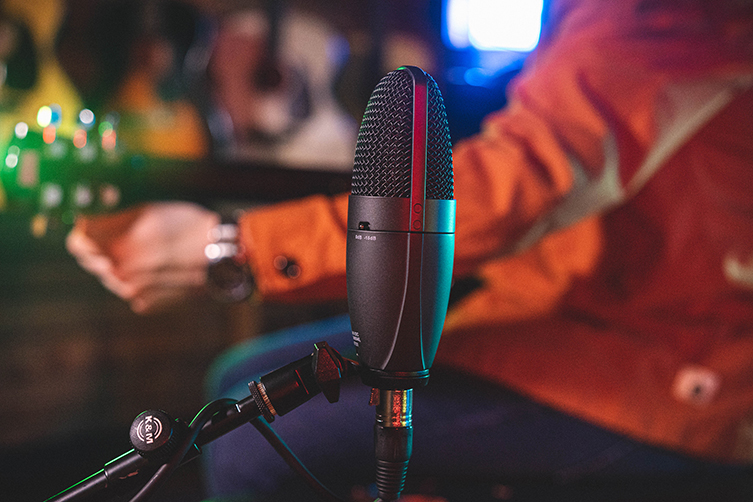
Our other choice is the sister-model to the SM58: its the Shure SM57. Like the 58, this mic is one of the most widely used on the planet, and we’d say that, measure for measure, the 57 is actually the more versatile model! It’s able to capture lower frequencies than the 58 (40Hz compared with 50Hz, which really matters when we are talking about bass and low end) but otherwise offers to very similar performance. There’s a saying that goes something like ‘a 58 on the vocals, a 57 on everything else’, and that’s kinda how it is for us too. We think the 57 is slightly warmer sounding (the capsules are the same but the outer construction around the ‘head’ is different), so using a 58 for vocals immediately gives those a little lift in the mix, if everything else is captured with the slightly warmer 57.
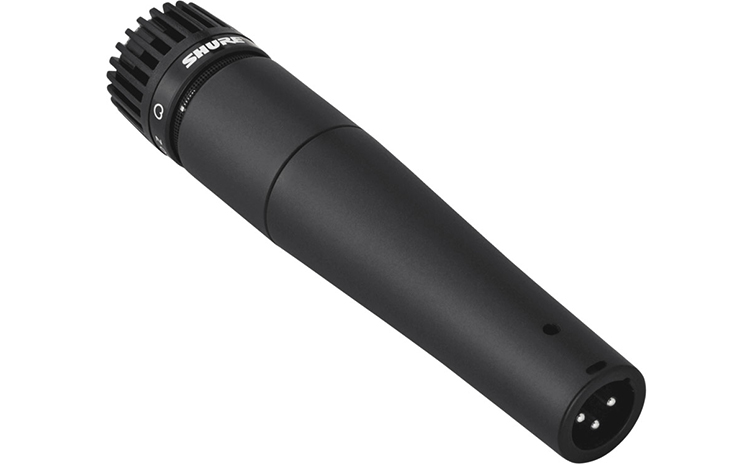
That said, we’d be more than happy to use an SM57 on everything if we only had the budget for one reasonably priced mic!
Shure Session Amplifiers
Some of our Shure sessions utilise amplifiers. These can be for keyboard players, bassists and guitarists who use a clean tone but still prefer to strum their Telecaster over an acoustic. In most cases, we’re happy to use an SM57, placing the pic straight on and positioned just at the side of the speaker cone. You can actually stick on some headphones and ask the musician to play some notes as you manoeuvre the mic, listening for the moment where the tone comes through in a quite obviously better way. When you have that, you’ll have your optimum mic position!
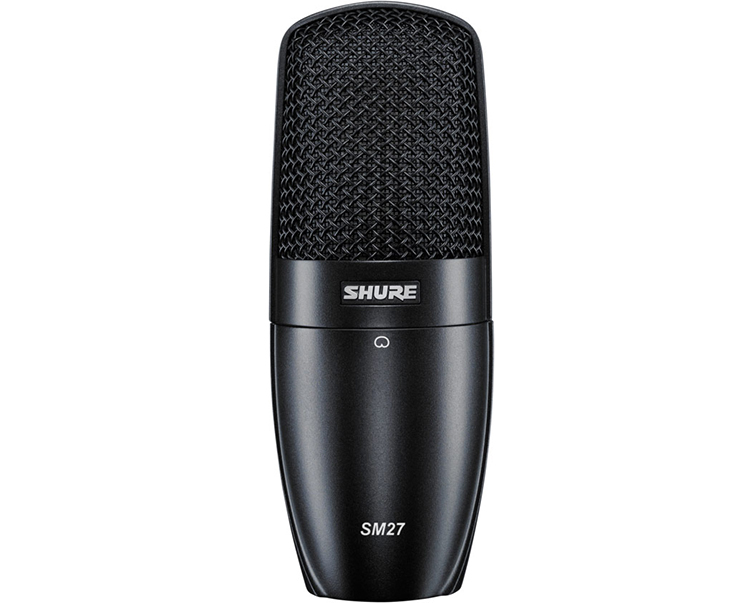
Bass amps and any speakers delivering a more ‘full range’ sound (in other words, anything with either a lot of low end or high end) often sound best when recorded with the likes of the SM27. The bigger diaphragm captures more sound, and the frequency response spectrum of 20Hz to 20KHz is most impressive.
Other Instruments
For other instruments like brass and so on, there exist a number of more specialised mics to renders them with slightly more specific detail. For our Shure sessions, we’ve found that the mics already mentioned allow us an unmatched palette: we’ve not felt the need to delve deeper at all! We get everything we need from the five mics we’ve mentioned, and often, that magic pairing of the SM27 and SM57 yields high quality results. Obviously, if you record a ton of saxophone or trumpet then you’ll want to dive deeper, though you might still find the SM7B being the prominent choice here, too!
Get Recording
When recording live performances, it’s all about the energy of the performer. It’s not about exhaustive perfection, since it’s not something you’ll want to do much ‘fixing’ to later. Knowing which mics to use to get the results you need will save you time, stress and disappointment. Hopefully this guide has armed you with enough good starting points to get you excited about your next live recording project! Let us know how you get on!





